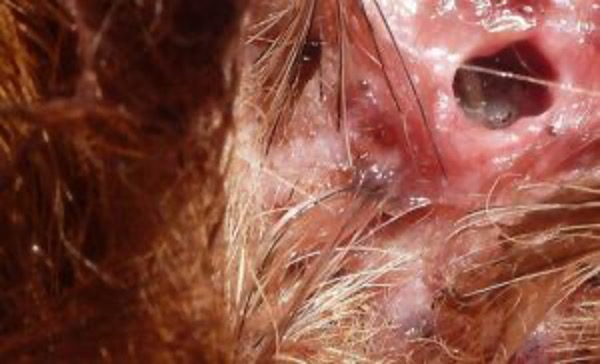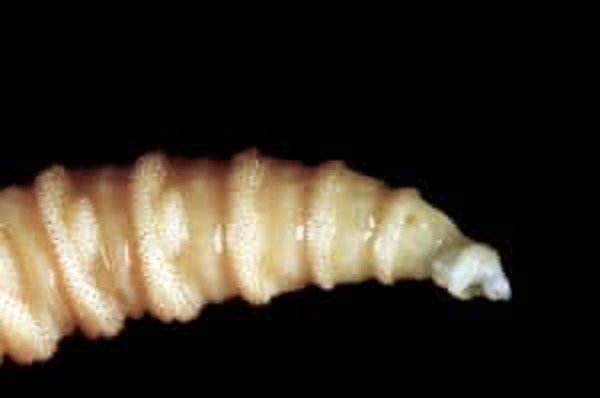Recent warnings from the United States Equestrian Federation (USEF) and the USDA’s National Veterinary Accreditation Program have raised alarms about the New World screw worm (Cochliomyia hominivorax) making its way into the U.S. from Mexico and Central America.
Why Screw Worms Pose a Serious Threat to Horses, Pets, and Livestock
Why should you be concerned? Screw worms are dangerous parasites that can invade any wound or mucous membrane on warm-blooded animals—including horses, cattle, dogs, cats, and even wildlife. Common entry points include the eyes, nostrils, lips, and the external reproductive tract (such as the vulva, penis, and sheath). Screw worm infestations can cause severe tissue damage and life-threatening infections in animals. For horses, especially athletic or show animals, the risks are even greater. Infected wounds can quickly worsen, and outbreaks could result in canceled events, halted animal movement, and strict government control measures.
That’s why it’s critical for all pet and animal owners—not just equine professionals—to recognize the signs of screw worm and take steps to prevent its spread. Whether you care for horses, dogs, or cats, staying informed and proactive can help protect your animals and your community.
Stay vigilant, know the symptoms, and implement prevention strategies to stop screw worms before they take hold.

–Image credit: Wikimedia Commons. Screw worm larvae feeding on tissue.
What is a Screw Worm?
A screw worm is a specific type of fly larva (i.e. maggot) that’s foreign to the United States. But these parasites feed only off living flesh, not dead animals like most of the maggots we are more familiar with.
They can infest any warm-blooded animal including horses, livestock, pets, wildlife and even humans. They enter through wounds and mucus membranes, as well as navels of newborn mammals. The worms “screw” or burrow in the wound, feeding as they go. By tearing at the host’s tissues with sharp mouth hooks, they can cause serious – and even deadly – damage to your horse.
Adult screwworm flies are slightly larger than the common housefly. Their eyes are orange, bodies are metallic blue or green, and the back sports three stripes.

–Image credit: Wikimedia Commons. Screw worm larva.
What’s Happening Today to Cause Alarm?
The US Department Agriculture eradicated screw worms from this country in 1966. They did it by using a sterile insect technique: The sterile male screw worm flies are introduced into an infestation and mate with fertile female screw worm flies. Since they don’t replicate themselves, the screw worm population of screw worm eventually dies out.
However, there is a constant risk of re-introduction into the United States. In 2023, NWS detections in Panama exploded after decades of containment. Since then, screw worms have been detected in other Central American countries.
On November 22, 2024, the Chief Veterinary Officer of Mexico notified the USDA’s Animal and Plant Health Inspection Service (APHIS) of a positive detection of New Worldscrew worm flies in Mexico.
In fact, an adult screw worm fly can travel up to 125 miles to lay its hundreds of eggs in a wound or mucus membrane. They can also arrive at their ultimate destination by hitching rides on animals and people who travel from infested areas.
If infestations are not controlled, the screw worm flies will continue to move north into the United States. APHIS is restricting the importation of animal commodities originating from or transiting Mexico effective immediately.
How Can I Tell If My Horse, Dog or Cat has Screw Worms?
Look for these signs:
- Wounds that drain or enlarge as the larvae feed
- Foul smell of decay
- Eggs that are deposited around the wound
- Weight loss and lethargy
At first, you won’t actually be able to see the screw worm maggots at the wound surface. That’s because only the breathing tubes of the maggot are at the surface. But usually by the third day of infestation, maggots might be visible.
If you think your animal has screw worms, don’t hesitate – get a veterinarian involved immediately. If the infestation is large enough, your animal could develop a secondary infection or toxicity, with dreadful consequences if not treated.
How is a Screw Worm Infection Treated?
First of all, since it’s a foreign animal disease, your vet must notify a state and/or federal animal health official in a suspected case. Then the horse (or whatever animal) will be quarantined until the larvae are successfully eliminated.
Fortunately, there are a number of ways to kill screw worms. Insecticides and larvicides like Ivermectin, Benzol, orgnophosphorus and diphenylamine can be injected or applied to the wound to destroy larvae. Larvae can also be physically removed from the infested tissue. All of these need to be done, however, under veterinarian care.
Daily wound care is essential for the health of the animal. You don’t want secondary infections or toxicity to take hold, as it can lead to death if not treated.
How are People Stopping Screw Worms?
Screw worm control is based on a sterile male fly release program. The females only mate once in their lifetimes. Since no eggs are produced after mating, the screw worm populations naturally decrease over time.
To prevent the spread of screw worms, animals imported from countries where screw worms are present are typically quarantined for seven days. During this time, they receive oral ivermectin and undergo thorough inspections of all potential entry sites. For stallions and geldings, this includes sedation to fully examine the penis and sheath. Only animals free of screw worm signs are allowed entry.
However, due to growing concerns, the United States has temporarily suspended the import of horses, cattle, and bison from Mexico—even for quarantine purposes. This action underscores the seriousness of preventing screw worm outbreaks within U.S. borders. Concern is especially high in U.S. states that border Mexico, as adult screw worm flies are capable of traveling significant distances and could potentially establish new infestations in the U.S.
Screwworm is a foreign animal disease and must be reported to CDFA or USDA animal health officials within 24 hours of diagnosis. When there is an infestation, these groups will investigate the case to make sure treatment is being administered. In severe cases, they will decide if additional control measures are needed. This would include insecticidal treatment of the environment or sterile fly release.
How Do I Protect My Horse, Dog or Cat?
It’s important to inspect any and all wounds (including tick bites, cuts or other small nicks) every day. Also be on the lookout for infestations in the navels of newborn foals, nasal or eye openings and genitalia. Inspect for any signs of larvae or eggs, which are creamy white and deposited near the edge of the wound. These daily inspections are super-important if you’re traveling internationally in countries where screw worms have been detected.
Then, if you see anything suspicious, contact your vet right away so they can determine what kind of larvae you’ve detected. If it is screw worm, agencies will respond quickly to remove the screw worms before a population can be established.
In addition, you can help prevent blow fly attacks like the screw worm by using topical sprays such as Sore No-More® Classic Ricochet spray for horses and dogs, aerosols, rubs and other fly control measures such as the Country Vet Automatic Flying Insect Kill System
Finally, don’t limit your inspections to horses. The screw worm can also attack dogs, cats, goats, pigs, cattle and any other animal in your keeping.
How to Treat Screw Worm Wounds
Banixx’s Wound Care Cream can be a major contributor to treating wounds made ugly by the screw worm. It is specially formulated for animal scratches and wounds, as well as any skin infections. Its anti-microbial formula provides substantial protection against an array of fungal and bacterial infections and dries like a liquid bandage. It’s gentle, fortifies the skin with its marine collagen ingredient and acts as a natural bug repellant with its oil of peppermint.
In addition, Banixx Horse & Pet Spray can be an integral part of treating your horse, dog or cat since its use on wounds helps to halt infection via its unique Ph formula. Moreover, its sting-free, odor-free formula makes it easy to apply as it causes no angst even to the most skittish horse. Furthermore, it can also be used in a preventative fashion on any wound so that the infection does not accelerate.
Stay Alert: Protecting Pets and Livestock from Screw Worm Threats
In summary, while the New World screw worm has not yet established itself in the United States, its growing proximity is a serious concern for horse, dog, and cat owners. Staying informed, practicing good wound care, and recognizing early signs of infestation are essential steps in protecting your animals from this dangerous parasite. With increased awareness and prevention, we can help ensure screw worms never gain a foothold and our animals stay safe and healthy.
If you need help or have more questions on dewormers and wound care for animals, call us at 800.786.4751.
LEARN MORE:
Equine Deworming: Horse Intestinal Parasites
What are the most common intestinal parasites in horses? Learn the best horse deworming schedule, deworming products and equine parasite control tips to fight worms in horses like strongyles, ascarids and tapeworms.
Foal Deworming FAQs: Deworming Foals and Yearlings
Discover effective foal deworming strategies to protect your young horse from parasites and support healthy growth. Get tips for developing a foal deworming schedule.
Intestinal Parasites in Dogs Webinar
What are signs of worms in dogs? What are the most common dog parasites? What dewormers are safe for pregnant and nursing dogs? This dog parasite webinar answers common questions when it comes to parasites in dogs.
Deworming Cats and Kittens
What dewormers are best for cats and how do you deworm a cat at home? Cats will inevitably pick up parasites, so it's important to deworm before the parasites cause medical issues. Learn how and when to deworm queens, kittens and adult cats.
Written by: Frank Reilly, DVM
Senior Doctor at Equine Medical & Surgical Associates
Frank Reilly, DVM has been in equine practice for 35+ years and has worked on six world-record racehorses. He is the Senior Doctor at Equine Medical & Surgical Associates, Inc. and a member of the AVMA, AAEP, NAEP, and IAPF. Dr. Reilly specializes in Equine Cushings, Insulin problems, Summer Eczema, Vitamin E deficiencies, COPD/Asthma, and Horse Foot Canker. Dr. Reilly is a 35+ year member of American Veterinary Medical Assoc. and the American Assoc. of Equine Practitioners. He is also a member of Pennsylvania Veterinary Association, the Northeast Assoc. of Equine Practitioners and is on the Board of Directors and Treasurer of Ryerss Farm-America’s First Horse Retirement and Rescue, established in 1888.
